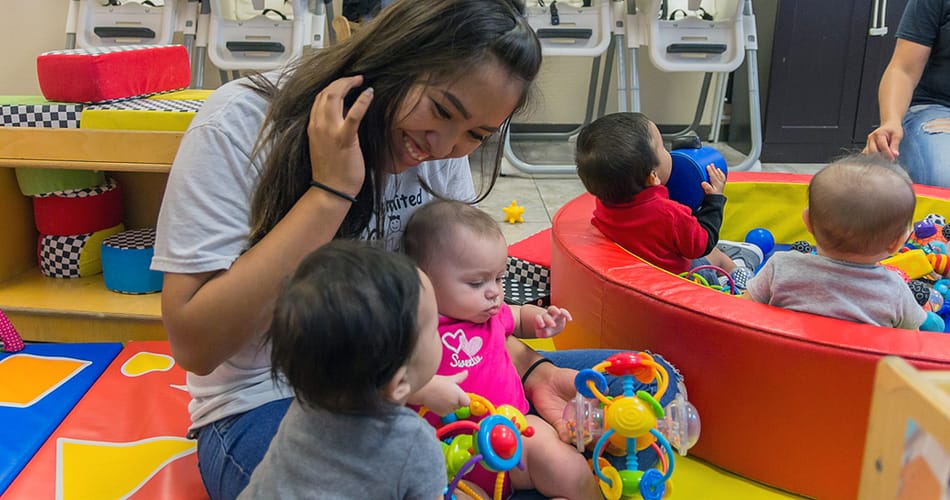“Play is often talked about as if it were a relief from serious learning. But for children, play is serious learning. Play really is the work of childhood.” – Fred Rogers
Why do we think of play and learning as two opposing ideas? Is it because playing is fun, often spontaneous, and because it feels good? Is it because children naturally explore their environments through play? Research on young children’s development tells us that play and learning are not in opposition to one another. Play is a condition for rich learning in the areas of language, math, science, social skills and self-regulation.
Free play occurs when children are able to direct their own play, by choosing what to do, what materials to use, and by forming their own groupings with other children according to their interests. As an early childhood educator, you strive to use the most effective methods to support children’s learning. That’s why it’s essential that you set the stage to maximize children’s learning through free play. You can start by examining your learning environment and daily schedule, and how you guide children’s learning through play.
The Learning Environment
A well-designed early learning environment includes distinct play areas that are set up to support different types of play. For example, you can select a low-foot-traffic area and place a rug, shelves with blocks and baskets of toy people, animals and cars for block play. You could chose a corner space and place a rug, beanbag chair, baskets of books and a flannel board with storybook characters to invite children to curl up and explore stories.
To maximize children’s learning through free play, children should be able to easily reach and use materials. For preschoolers, this means materials are stored within easy reach and children are allowed to choose materials independently. For young infants, who are not yet mobile, this means materials should be brought within the infant’s reach and rotated throughout the day to allow the infant to explore a variety of materials.
The Daily Schedule
In high-quality early learning programs, children spend much of their time in play. For infants and toddlers, this means most of the time a child is awake and ready to play. They are allowed to explore without being restricted by long group times, lengthy routines or waiting periods. For preschoolers, this means at least one-third of the day consists of free play. For either age group, long blocks of time encourage deep and meaningful play. Take a look at your daily schedule and find out if it includes long blocks (more than one hour) of uninterrupted play. If free play occurs in short increments, consider combining these play periods into longer blocks to support more complex and constructive play. As a bonus, combining play periods into longer blocks can reduce the number of transitions in your daily schedule, allowing for a smoother daily routine and maximizing the amount of time children spend learning.
The Educator’s Role
As an educator, you play an important role in supporting children’s learning through play. When you join in children’s play, you have opportunities to embed learning objectives when children are most engaged. For example, while a toddler sorts Duplo bricks, you can introduce math concepts, such as more and less. You can also introduce new language about color, size and shape by describing the bricks. As another example, while a preschooler explores books and pictures, you can support their understanding of emotions by talking about the facial expressions and feelings of the characters.
Allow yourself to slow down, relax and experience the joy of play. As you do, you’ll notice more opportunities to support children’s learning will naturally arise as you watch for them.
We’d love to hear from you. How do you support children’s learning through play? What changes have you made to maximize children’s learning through play in your program? What have you noticed about children’s development as a result? Email your story to the Quality First team at QualityFirst@firstthingsfirst.org.
